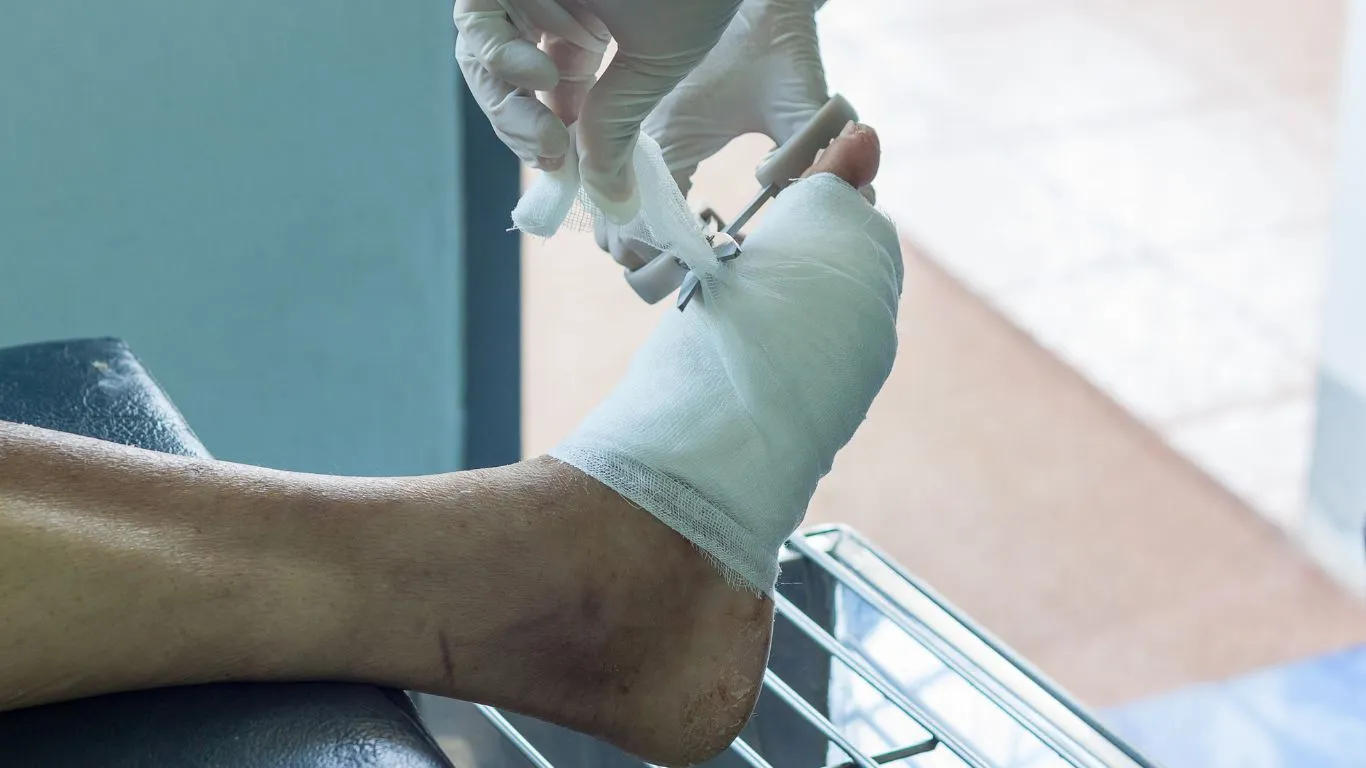
10 Sep Can diabetic feet be cured?
Diabetic feet is a general term that encompasses a number of health issues that can affect the feet of diabetic patients, leading to the development of serious health complications. The risk of developing these complications is particularly heightened in diabetic patients due to diabetes-related issues that contribute to delayed wound healing, poor blood circulation to the feet, and neuropathy. Some may wonder: Can diabetic feet be cured? Dr. Amir Malkawi, a vascular surgery consultant, provides insight into this question.
Can diabetic feet be cured?
Yes, in mild cases, it can be treated through simple medical interventions, resulting in complete recovery from diabetic foot. However, severe cases may not respond to treatment and may require surgical intervention or even amputation of the affected part of the foot.
Treatment of diabetic foot
Medications
Many health problems in the foot can lead to the development of diabetic foot issues. The appropriate treatment is selected based on the specific health problem. Diabetic foot may result from bacterial or fungal infections, wounds due to injury, among other issues. Medical treatment for diabetic foot may include the following:
- Applying dressings to the affected foot after applying creams that aid in wound healing and healing of skin ulcers.
- Prescribing antibiotics orally or intravenously depending on the severity of the condition, and in some cases, a cream containing antibiotics may be prescribed.
- Prescribing medications that improve blood circulation and prevent blood clotting, such as anticoagulants.
- Other medications to treat health problems causing diabetic foot.
Read More: Pre-catheterization instructions
Surgery
Doctors may resort to surgical treatment of diabetic foot if the health problem does not respond to medications and other advice when followed, or if there is a serious health problem requiring surgery to prevent the development of other complications. Surgical options for treating diabetic foot include:
- Cleaning any wounds or ulcers and draining accumulated fluids in the feet.
- Excising ingrown toenails.
- Removing dead skin and tissues.
- Performing surgery to improve blood flow to the foot in case of vascular issues, such as installing a stent.
- Corrective surgery for foot deformities if present or occurring due to injury.
- Amputation of the affected foot in severe cases of the disease where tissue necrosis or gangrene develops. The extent of amputation depends on the amount of damaged
- tissue, ranging from partial foot, whole foot, to even up to the knee.
Tips for caring for and preventing diabetic foot
Dr. Amir Malkawi recommends several measures and tips to help in the recovery from diabetic foot or to prevent it, which may include the following:
- Ensuring proper management of blood sugar levels by adhering to prescribed diabetes medications.
- Following a healthy diet.
- Washing the feet daily with warm water and soap.
- Daily monitoring of the feet and noting any formation of new ulcers or wounds.
- Keeping the feet moisturized while avoiding placing moisturizer between the toes.
- Wearing socks and properly fitting shoes.
- Abstaining from smoking due to its role in weakening blood circulation.
- Regularly visiting the doctor to ensure foot health and effective diabetes control.
Symptoms of diabetic foot that require medical attention
Early detection of diabetic foot conditions contributes to enhancing recovery chances and preventing health complications. Therefore, it is important to promptly consult a doctor if any of the following symptoms occur:
- Foot or leg pain during physical activity.
- Signs indicating fungal infection between the toes, such as redness or appearance of white color between the toes.
- Formation of ulcers on the foot.
- Changes in foot color or foot temperature (such as feeling warmth when touching the foot).
- Loss or weakening of sensation in the feet.
- Tingling and numbness in the foot.
- Changes in the shape of toenails, such as thickening and yellowing.
- Hair loss on the foot or lower leg.
References:
[1] – https://www.verywellhealth.com/diabetic-feet-5216003
[2] – https://my.clevelandclinic.org/health/diseases/21510-diabetic-feet
[3] – https://www.healthline.com/health/diabetic-foot-pain-and-ulcers-causes-treatments
[4] – https://my.clevelandclinic.org/health/diseases/21510-diabetic-feet
[5] – https://www.medicalnewstoday.com/articles/317504
[7] – https://www.webmd.com/diabetes/foot-problems
[8] – https://www.cdc.gov/diabetes/library/features/healthy-feet.html

